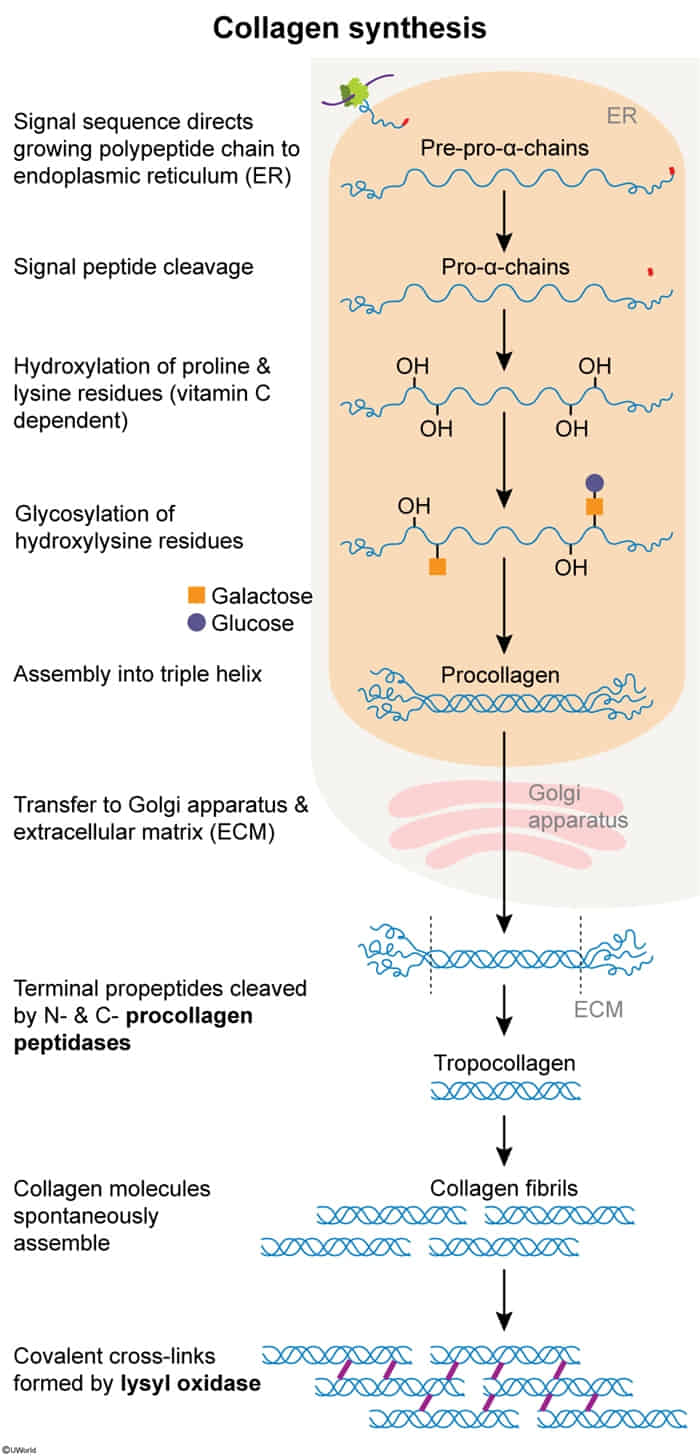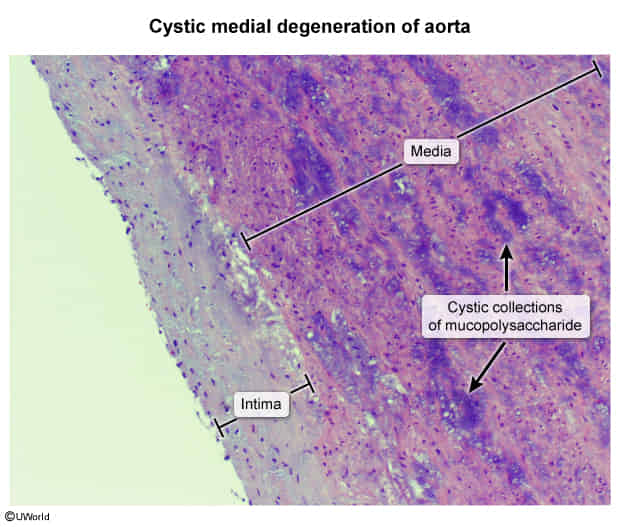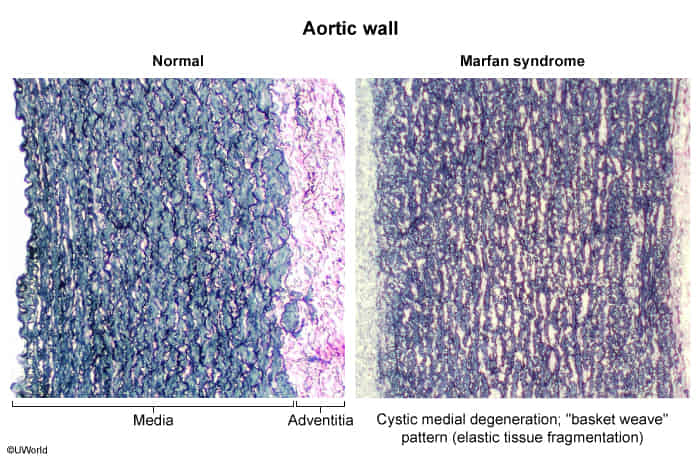Epidemiology
Etiology
Marfan syndrome
- Mutation of fibrillin-1 gene (FBN1) on chromosome 15 → defective fibrillin (a glycoprotein that forms a supportive sheath around elastin) → defective connective tissue microfibrils → defective elastin
- Autosomal dominant inheritance pattern with variable penetrance
Mnemonic
MarFan syndrome is caused by a gene mutation in FBN1 on chromosome 15 (Fifteen), resulting in defective Fibrillin protein.
Ehlers-Danlos syndrome
- Mutations in genes (e.g., COL5A1, COL3A1) that control the synthesis and processing of different types of collagen → collagen defects (e.g., a defect in lysine-hydroxylysine cross-linking of tropocollagen leads to unstable collagen fibrils)
- Caused by a deficiency in procollagen peptidase, the enzyme that cleaves terminal propeptides from procollagen in the extracellular space. Impaired propeptide removal results in the formation of soluble collagen that does not properly crosslink.

- Caused by a deficiency in procollagen peptidase, the enzyme that cleaves terminal propeptides from procollagen in the extracellular space. Impaired propeptide removal results in the formation of soluble collagen that does not properly crosslink.

Pathophysiology
Clinical features
Tip
The classic presentation of MFS includes aortic aneurysm or dissection, long extremities, arachnodactyly, joint hypermobility, and subluxation of the lens of the eye.
Diagnostics

Pathology
- Cystic medial degeneration: a degeneration (necrosis) of large blood vessels such as the aorta.
- Seen in disorders that cause increased arterial wall stress (e.g., hypertension, coarctation of the aorta) as well as connective tissue disorders (especially MFS and EDS)
- Can lead to aortic aneurysm and aortic dissection
- Histopathology


- Loss, thinning, disorganization, and fragmentation of elastic tissue in the media
- Accumulation of mucoid extracellular matrix
- Loss of smooth muscle nuclei